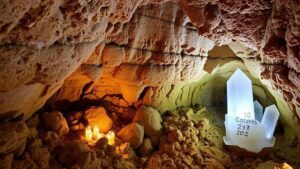Searching for Apache tears, a type of obsidian, in the volcanic plains of the Mimbres Valley.
Searching for Apache Tears: A Rockhounds Guide in the Volcanic Plains of the Mimbres Valley
Apache tears, a unique form of obsidian, are prized among rockhounds and mineral collectors for their striking appearance and historical significance. These small, rounded stones are derived from volcanic eruptions and are found in various locations; one of the best spots to search for them is the Mimbres Valley in New Mexico. This article will explore the geology of the area, tips for successful searching, and the allure of Apache tears to collectors.
Understanding Apache Tears
Apache tears are a type of obsidian, which is a naturally occurring volcanic glass formed by the rapid cooling of lava. Unlike other types of obsidian, Apache tears are distinguished by their opaque, dark hue, and their characteristic rounded shape. The formation of these stones is steeped in Native American folklore, which adds to their appeal among collectors.
Geological Background
The Mimbres Valley is situated amidst the volcanic mountains of the southwestern United States. The region is rich in volcanic history, with eruptions dating back millions of years. obsidian found here primarily originates from ancient lava flows. The specific deposits that give rise to Apache tears are characterized by the presence of numerous volcanic gases and bubbles. As these bubbles cool and solidify, they leave behind the glassy material that forms Apache tears.
Scientific Data
Apache tears are composed mainly of silicon dioxide (SiO2), which typically makes up about 70-75% of the mineral. Also, these stones contain trace elements, including iron and aluminum, which contribute to their dark color. The hardness of Apache tears measures between 5 and 5.5 on the Mohs scale, making them relatively durable yet still susceptible to chipping or scratching if mishandled.
Searching for Apache Tears in Mimbres Valley
The Mimbres Valley offers a variety of suitable locations for collectors eager to find Apache tears. The best times for hunting are during or just after rain, as the moist earth can expose new stones.
Best Locations
- The area surrounding the Mimbres River
- Old lava flows west of the valley
- The outskirts of the Gila Wilderness
- Near the historic Mimbres Culture Heritage Site
Practical Tips for Collectors
- Bring a sturdy backpack to carry your finds, along with gloves for protection.
- Use a sturdy stick or tool to dig gently into the ground, revealing stones that may be buried.
- Practice patience; searches can range from a quick find to several hours of sifting through rocky soil.
- Respect the local environment; adhere to “leave no trace” principles to preserve the landscape.
The Allure of Apache Tears
Apache tears are not only sought after for their beauty but also their significance. Many collectors appreciate their connection to Native American history, viewing them as talismans of protection and resilience. Plus, Apache tears are believed to have metaphysical properties, often associated with healing and emotional balance, making them appealing to both collectors and those interested in spiritual practices.
Conclusion: Embracing the Adventure
Searching for Apache tears in the Mimbres Valley is an engaging and rewarding experience for any rockhound or mineral collector. Armed with knowledge of their geological formation, practical searching tips, and an understanding of their cultural significance, collectors can embark on a fulfilling treasure hunt. As you explore this remarkable landscape, remember to embrace the journey, respect nature, and enjoy the thrill of discovering these beautiful stones.



